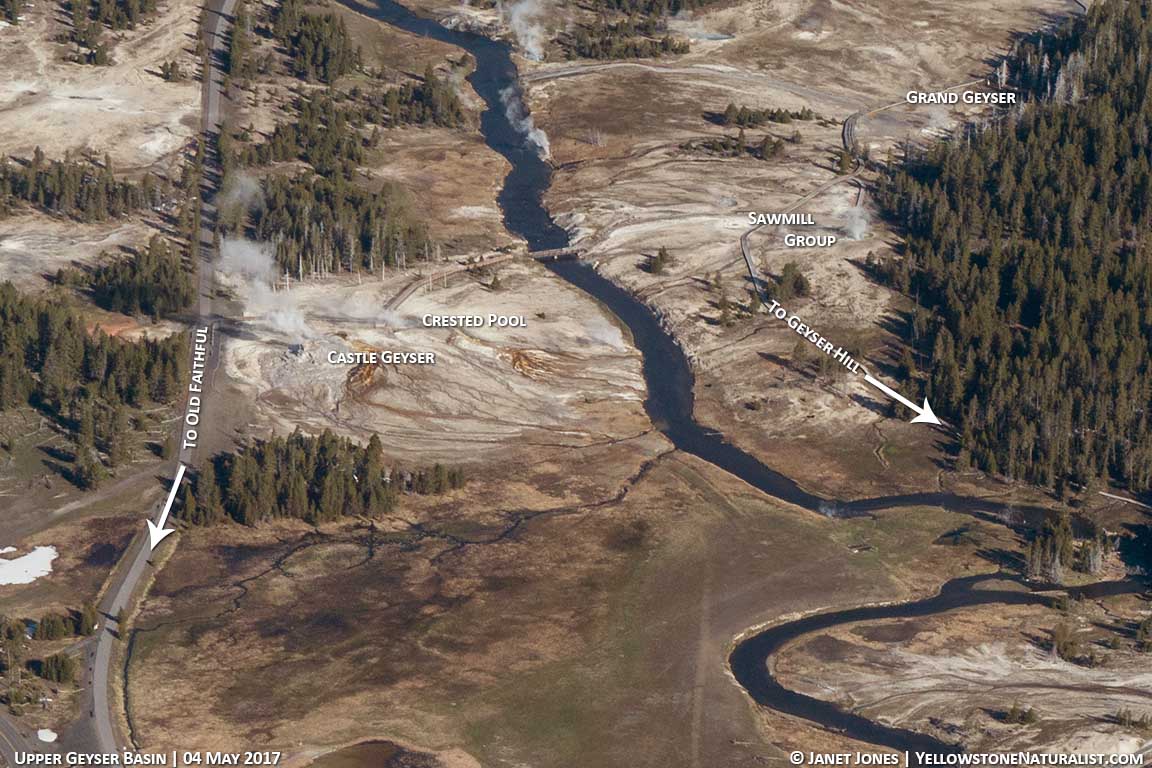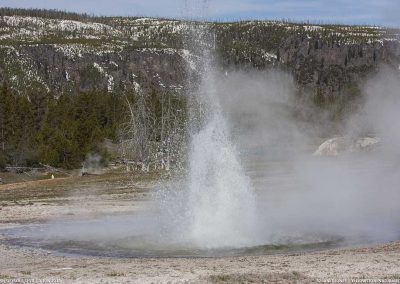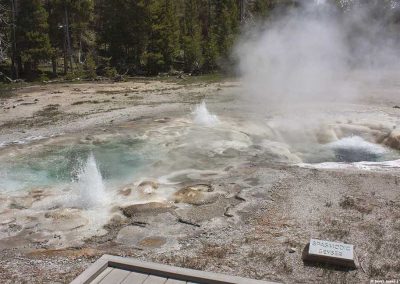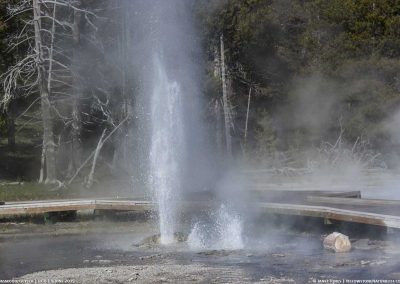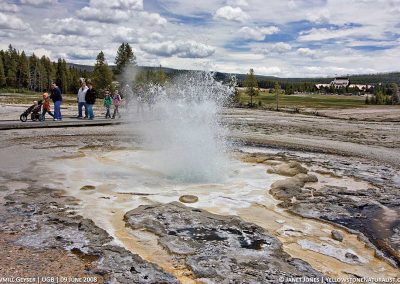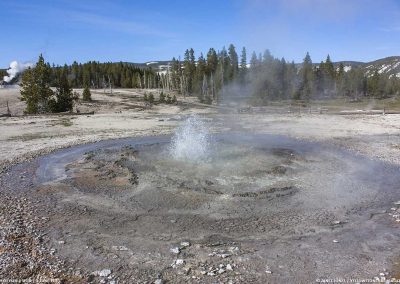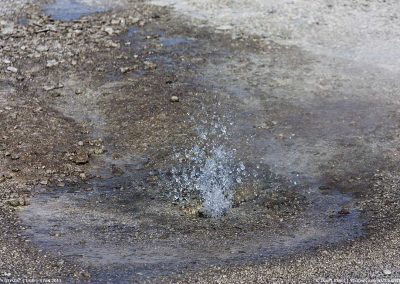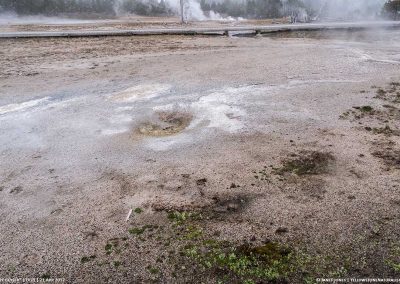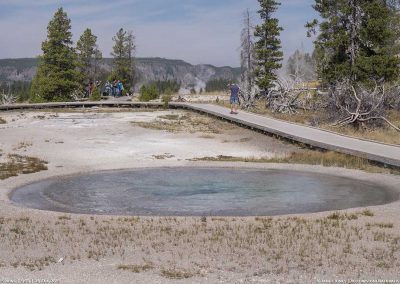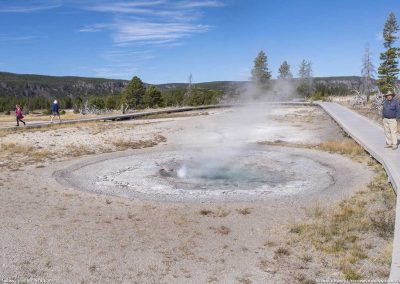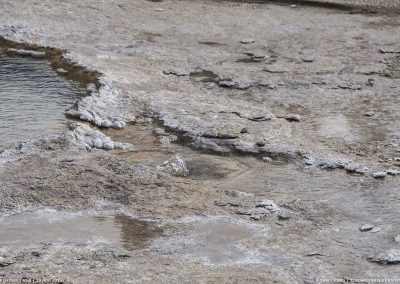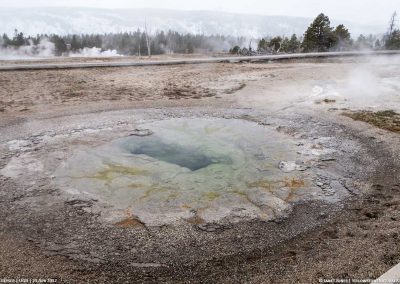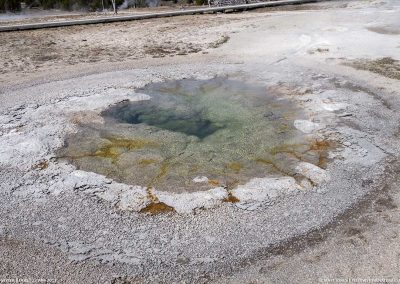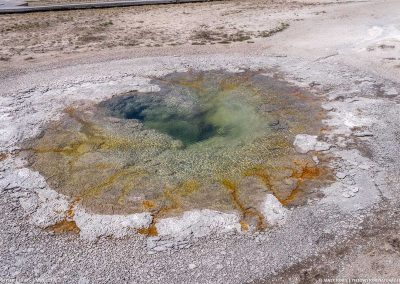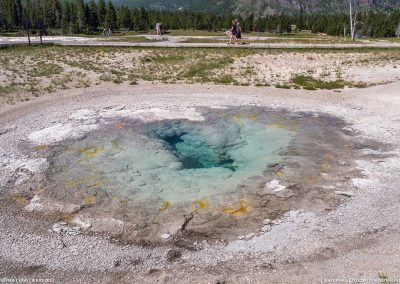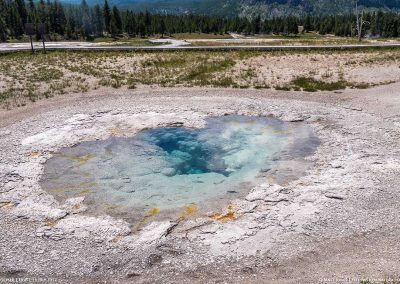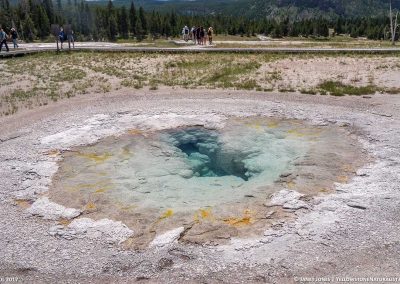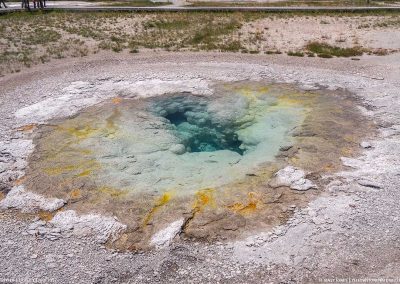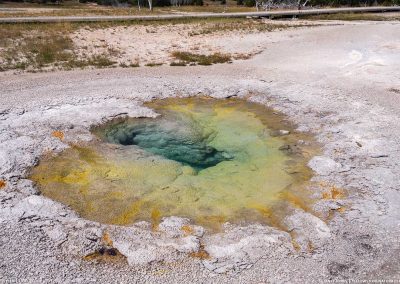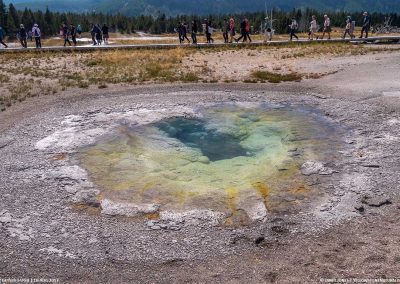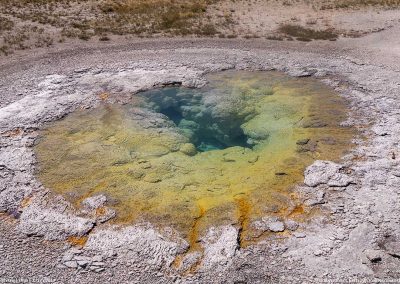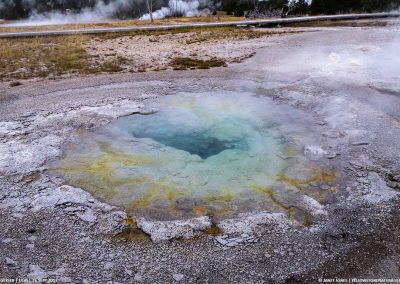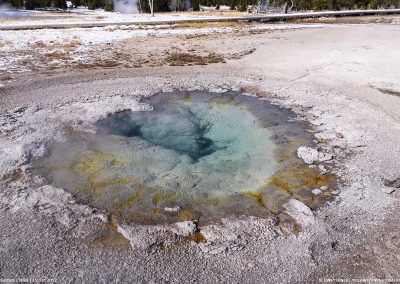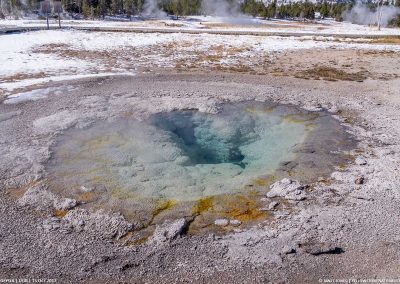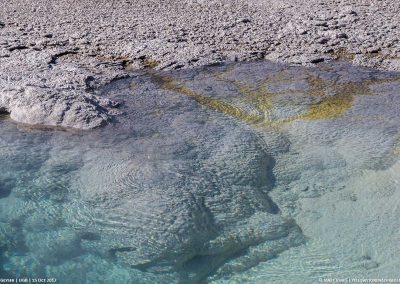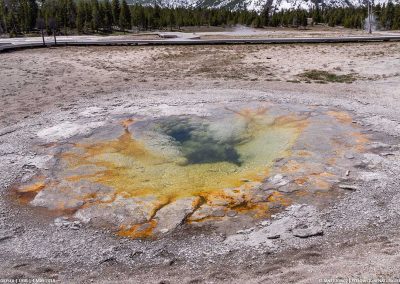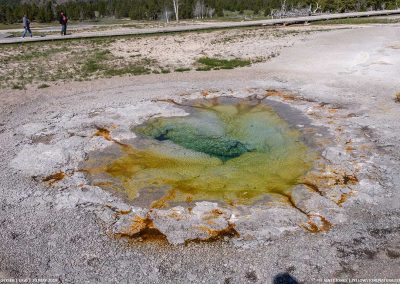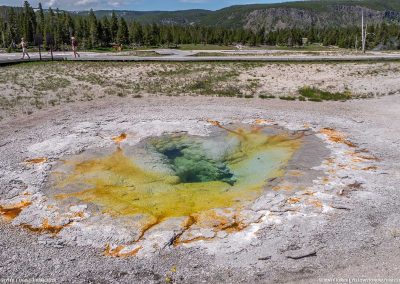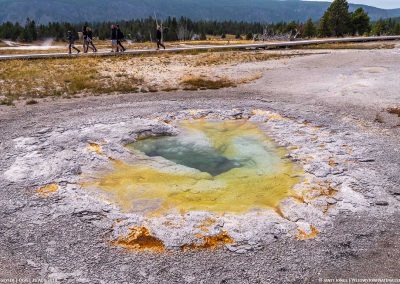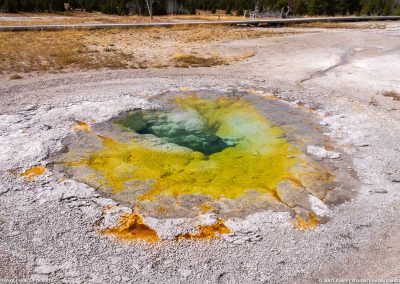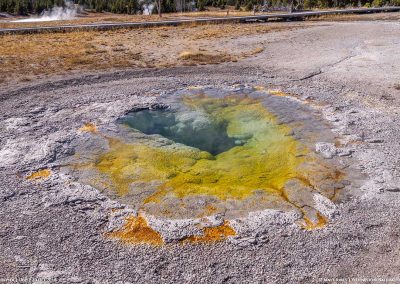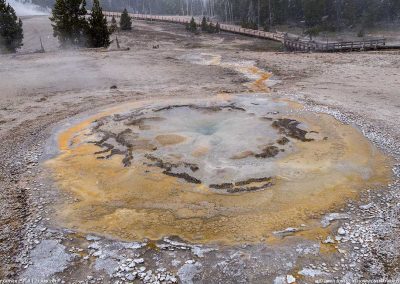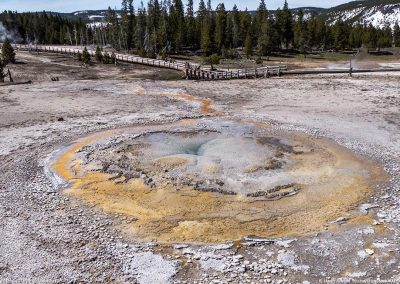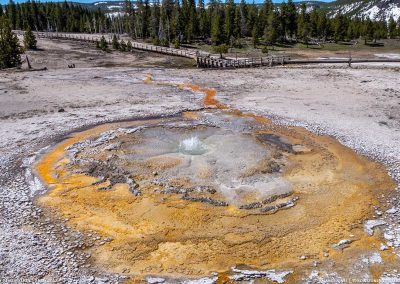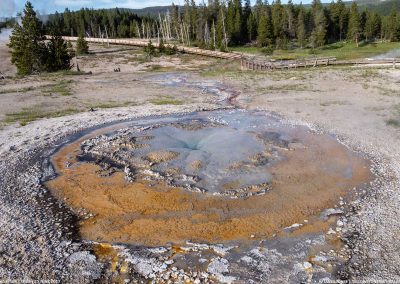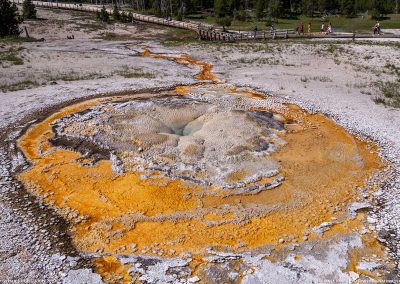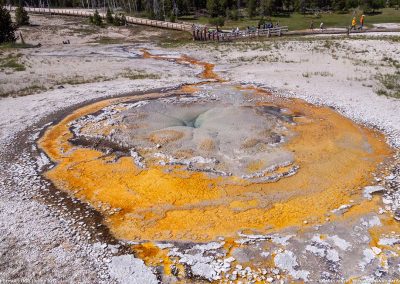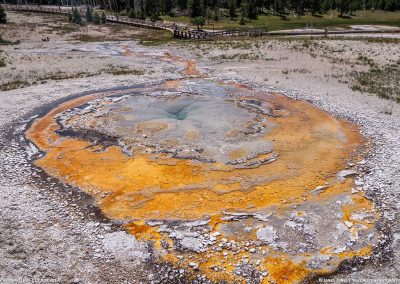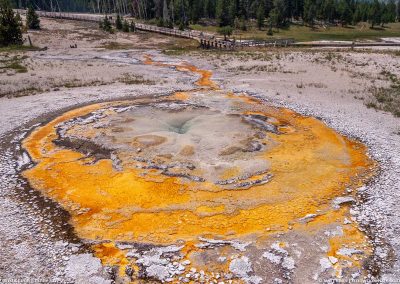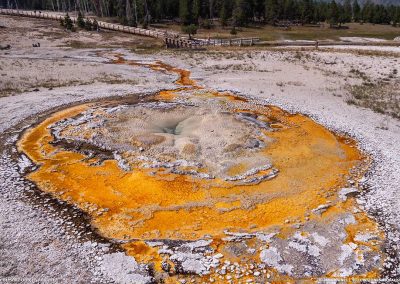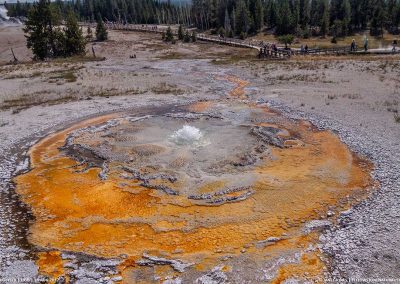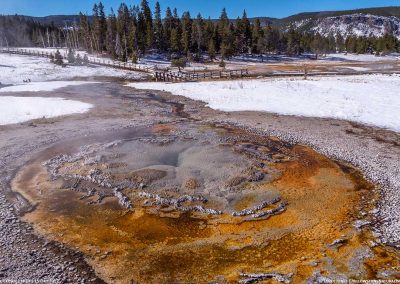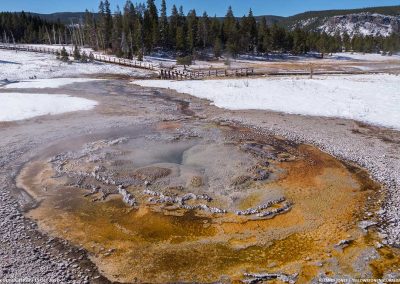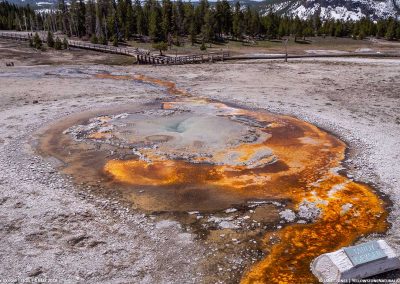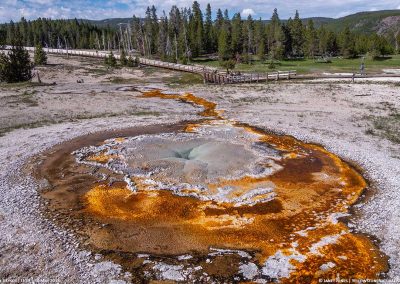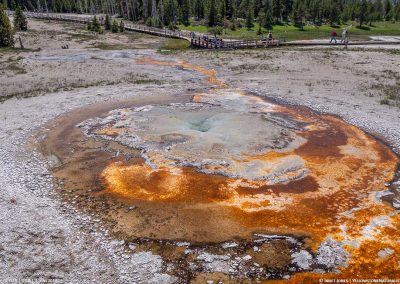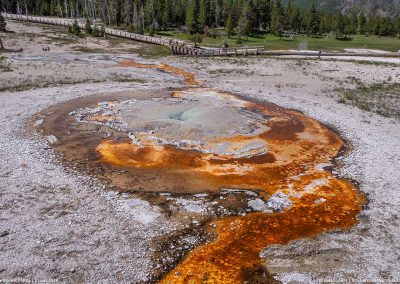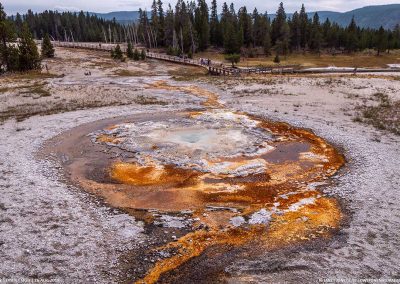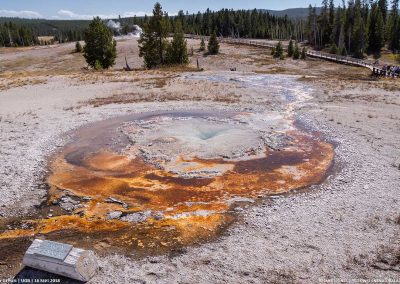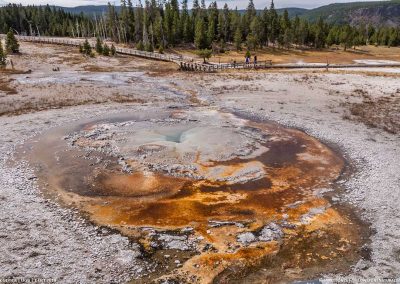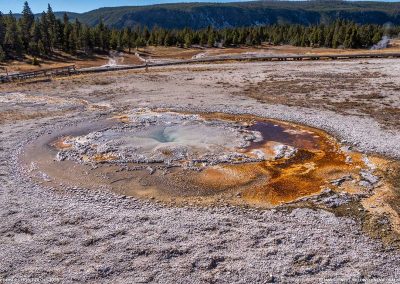Get to know the Sawmill Group of Geysers
Near Grand Geyser is a set of geysers that are known to be connected underground. This is the Sawmill Group or the Sawmill Complex. This post will give a general overview of this group along with various types of behavior seen here.
WHERE IT’S LOCATED
No matter if you approach the Grand Geyser area from Geyser Hill or from Castle Geyser, you reach the Sawmill Group before arriving at Grand. This is the area where the boardwalk makes a loop to safely view the thermal features here. However, not all in this section are part of this group. Notably NOT in the Sawmill Group are Belgian Spring, Crystal Spring, and Bulger Geyser despite their close proximity.
ABOUT
There are eleven thermal features in this group of geysers. Through much study by others in the past, we know they are well connected.
- Tardy Geyser
- Churn Geyser
- Sawmill Geyser
- Uncertain Geyser (not pictured below)
- Twilight Spring
- Penta Geyser
- Spasmodic Geyser
- Oval Spring
- “Nifty Geyser”
- Old Tardy Geyser (not pictured below)
- Slurp Geyser
DIFFERENT MODES OF BEHAVIOR
The main geysers that can dominate the play in this interconnected system are Penta & Churn (often seen dominating together), Sawmill or Spasmodic. Depending on which one(s) are dominating the play here gives us what “mode” the group is in. So, we have “Sawmill Mode,” “Penta/Churn Mode,” and now “Spasmodic Mode.”
While we enjoyed consistent behavior from this group (for decades), in spring we would often see a shift to Penta/Churn Mode. Then, later in the summer, we’d see Sawmill take over again for the most part. The water level in this group would change from not a drop in sight (a “deep drain”) to eruptions. As the system recharged and the water levels rose, we’d wait to see if Penta might have a chance at erupting or if Sawmill would start again.
THEN IT CHANGED
However, in early 2017, something changed (as is the norm in Yellowstone geysers and hot springs). There seemed to be a pause and neither mode was seen. Instead, Spasmodic Geyser took over the group’s energy. This type of pause had been seen briefly at times in the past, but as of the writing of this, we are now two years into this pause. Spasmodic now has nearly constant overflow, creating new overflow channels that support a lush growth of microbes. Also consistently overflowing have been Churn Geyser, Tardy Geyser, and Twilight Spring. The small sput known as “Nifty Geyser” became a perpetual spouter up to about a foot or so.
2018 saw fairly regular eruptions from Old Tardy Geyser that started its activity in August after about a year and a half pause. “Nifty” stopped its perpetual spouting in Sept/Oct 2018. The water levels in the entire group continue to cyclically rise and fall, but no deep drains have been seen. The water now rises and falls 6-8″ overall. In some of these thermal features, there’s a line of microbes. This is where there’s enough water and heat to support microbe growth.
COMPARISON PHOTOS
The microbes growing in these geysers tell us they haven’t erupted in some time. Even if they don’t erupt, we should see a lessening in the microbe growth if the heat returns. To that end, I’ve taken regular photos of this group since this pause started. Below are the photos for Tardy and Oval Spring – good indicators of the microbe growth.
Oval Spring
Tardy Geyser
IN CONCLUSION
How long this pause will last is unknown, but we are starting to see a shift. Sometimes energy shifts take a year or more to happen so it will be interesting to see what the summer of 2019 will bring. Stay tuned!
